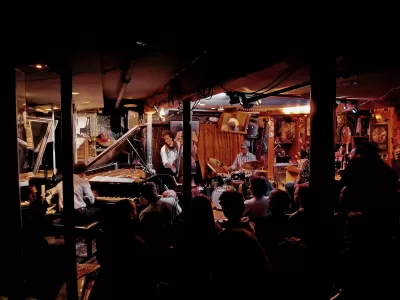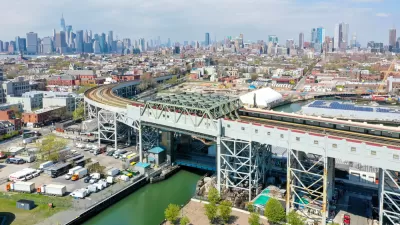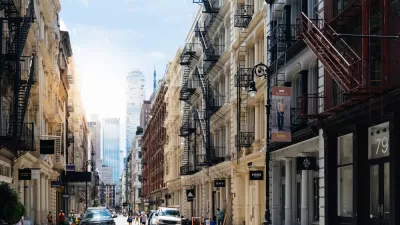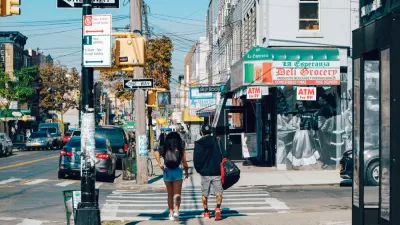A study of the musical nightlife of New York shows these spaces are an integral part of the city’s urban landscape.

A report released in September called Creative Footprint NYC takes a closer look at music venues in the city, their role in fostering community, and ways to ensure that they do not disappear.
In addition to locating the venues, the study considered the type of music the venues made available, reports Feargus O’Sullivan:
Crucially, the report doesn’t only measure venue size and location; it also develops metrics that help to assess the cultural and community value of each site. It does this by creating an “experimental output” metric that appraises the extent to which a venue provides non-mainstream alternatives to commercial offerings, and thus to what extent it broadens the city’s cultural possibilities.
Most venues are in Manhattan, but the bulk of experimental venues are in Brooklyn and Queens, according to the report. Gentrification and rising rents in these areas can threaten these alternative venues, and the consequences can run deep, O’Sullivan points out:
And when less commercial venues are forced to close, a focal point for part of the local community is lost, as is a place where some social divides are bridged. When these venues are cultural beacons for minority communities, which themselves face the threat of displacement, the potential damage to community cohesion and neighborhood identity is even greater.
Part of remedying this, says Sullivan, is understanding the value and contribution of these music venues. In addition, policies can support music venues, such as developer incentives, rent control, and easier permitting processes. “Something needs to be done to protect and nurture the city’s vitality, to prevent it from becoming a mere dormitory for the better off. That something could—indeed should—involve a more positive attitude to nightlife,” argues Sullivan.
FULL STORY: What Small, Diverse Music Venues Mean to New York City

Maui's Vacation Rental Debate Turns Ugly
Verbal attacks, misinformation campaigns and fistfights plague a high-stakes debate to convert thousands of vacation rentals into long-term housing.

Planetizen Federal Action Tracker
A weekly monitor of how Trump’s orders and actions are impacting planners and planning in America.

In Urban Planning, AI Prompting Could be the New Design Thinking
Creativity has long been key to great urban design. What if we see AI as our new creative partner?

King County Supportive Housing Program Offers Hope for Unhoused Residents
The county is taking a ‘Housing First’ approach that prioritizes getting people into housing, then offering wraparound supportive services.

Researchers Use AI to Get Clearer Picture of US Housing
Analysts are using artificial intelligence to supercharge their research by allowing them to comb through data faster. Though these AI tools can be error prone, they save time and housing researchers are optimistic about the future.

Making Shared Micromobility More Inclusive
Cities and shared mobility system operators can do more to include people with disabilities in planning and operations, per a new report.
Urban Design for Planners 1: Software Tools
This six-course series explores essential urban design concepts using open source software and equips planners with the tools they need to participate fully in the urban design process.
Planning for Universal Design
Learn the tools for implementing Universal Design in planning regulations.
planning NEXT
Appalachian Highlands Housing Partners
Mpact (founded as Rail~Volution)
City of Camden Redevelopment Agency
City of Astoria
City of Portland
City of Laramie





























